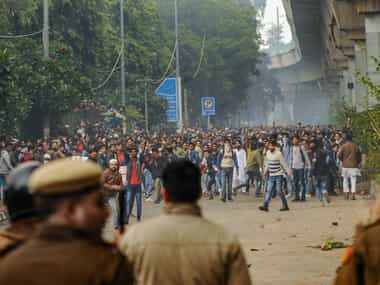Raghav Pandey, in his article titled CAA and NRC: Those arguing that the two are discriminatory and tools of persecution must read up on Constitution and Indian law , urges that the question of the constitutionality of the Citizenship Amendment Act, 2019 involve “certain legal and constitutional scholarship, and can’t be settled at the pedestrian level, on the roads.”
He laments the “dearth of legal scholarship on the constitutionality or unconstitutionality of the CAA and the proposed national NRC”, while being unaware of a steady stream of academic and popular writing that has examined the issue.
In this piece, I argue that Pandey’s engagement with the existing case law and scholarship is, at best, shallow, and at worst, disingenuous. Pandey makes four broad claims in his piece, which I examine on the basis of the ways that they are likely to come up in a judicial proceeding.
Legal Standing
First is the question of legal standing, where Pandey asks whether “an illegal immigrant can even approach the court.”
This is indeed a very pertinent question — however, the petitions which have been currently filed before the Supreme Court have been filed as Public Interest Litigations (PILs), a specific category of proceedings which greatly relaxes the personal injury requirement which is the hallmark of most constitutional litigation. Pandey also omits to mention that the right to equality, which is the central thrust of much of the petitions filed across high courts and the Supreme Court against the CAA, is available to all persons to whom the laws of India apply — including non-citizens.
It is not entirely accurate that “only the subjects have the legitimacy to approach the courts and to challenge their treatment by the state”. If this were to be the case, only persons with the requisite financial and organisational capacities will be able to approach courts, and only after their rights had been violated. This is why PILs were instituted to enable public spirited individuals to approach the higher judiciary under their respective writ jurisdictions on behalf of a group of individuals even when their rights have not been directly abridged.
Constitutional, not parliamentary or executive supremacy
Pandey argues that the treatment of foreigners and grant of citizenship is a “sovereign and totally executive function”. Such a statement glosses over the fact that while the determination to be made in individual cases occurs through the exercise of an executive function, the overall framework within which such determinations occur need to be legislative. As a result, any decision on the grant of citizenship needs to be done through legislation. Such legislation — the Citizenship Act for example — is subject to the provisions of the Constitution of India since Article 13(2) provides that the State is barred from enacting a law which takes away or abridges Fundamental Rights.
The framers of the Indian Constitution specifically opted for a model of governance in which the supremacy of the Constitution, rather than the Parliament, was enshrined. Thus, a legislation like the CAA upon which executive decisions of citizenship determination is done must at all times be subject to the provisions of the Indian Constitution.
Article 14: Classificatory Reasonableness
Pandey argues in favour of the constitutionality of CAA with respect to Article 14 in three veins. First, he establishes legal capacity to discriminate (“the state can make rules to benefit a certain class of individuals, which can arguably also apply to illiegal immigrants”), second he argues for the reasonableness of the classification (“the reasonability of persecution and its relevance in better treatment”), and third, that such a classification can serve as “non-arbitrary treatment by the state”. Pandey attempts to use the doctrines of reasonable classification and non-arbitrariness to arrive at his conclusions.
It is not in doubt that the State has the capacity to differentiate classes of persons while formulating a law. In the event that the State engages in discrimination, it is required to demonstrate a reasonable basis for the classification which is discriminatory in nature, while also showing that such a classification bears a reasonable nexus to the object being sought to be achieved. The CAA fails on both these counts.
This is because classification which are based on characteristics like religion — which are fundamental to human autonomy — are constitutionally impermissible, as has been argued while using separate opinion of Justice Malhotra in Navtej Johar. A legal regime for the grant of citizenship like this which uses religion as a basis for classification also offends India’s preambular commitment to the establishment and maintenance of a secular state.
Second, even if a classification based upon religion were considered constitutionally permissible, it bears a very tenuous nexus with the object sought to be achieved (exempt individuals “belonging to minority communities (compelled to seek shelter in India due to religious persecution or fear of religious persecution) who have entered into India on or before 31st December, 2014 from the definition of illegal migrant under section 2(b) of The Citizenship Act, 1955, as well as relevant provisions of rules and order made under the Passport (Entry into India) Act, 1920 and the Foreigners Act, 1946).
If the object of the CAA was to assist individuals belonging to minority communities compelled to seek shelter in India due to religious persecution or fear of religious persecution, the religion-based classification it makes rests upon the imprecise assumption that there is no religious persecution within the identified countries among its majority religion (like the persecution of Ahmadiyyas), while also leaving out other religious communities like the Jews, who have been known to be subjected to persecution in Pakistan.
Pandey’s claim of the “reasonability of persecution and its relevance in better treatment (sic)” weighs against his broader argument for the CAA since the law does not account for the reasonable expectation of persecution from of a number of other religious groups and does not fulfil the nexus requirement to merit constitutional protection.
Article 14: Non-arbitrariness as applied to country classifications
Pandey’s article usefully states that “it does not matter if the state action attempts a reasonable classification or not, it matters if the action is arbitrary”. He would have done well to consider Justice Nariman’s formulation of manifest arbitrariness as “something done by the legislature capriciously, irrationally and/or without adequate determining principle.” In her post on the constitutionality of the CAA , Nivedhitha K applies this test to four possible determinative criteria which may have been applied by the CAA in its treatment of persecuted religious minorities from three specified countries - Pakistan, Bangladesh and Afghanistan.
First, the principle that the classification is based on those countries which were part of British India, which does not explain the inclusion of Afghanistan. Second, whether the classification is based on those countries which have a designated state religion — which would not explain the omission of Sri Lanka which, according to Article 9 and Section 3 Article 1 of its Constitution, gives to Buddhism “the foremost place”; or that of Bhutan, which, according to Section 3 Article 1 of its Constitution, declares Buddhism as its “spiritual heritage”.
Third, whether the classification is based on those countries where there is the greatest risk of harm to persecuted religious minorities (which is a permissible course of action for the legislature under Indian constitutional law). Proceeding upon this principle would negate the mountain of available evidence on the systematic risk posed by state instrumentalities to Rohingya minorities in Myanmar. Fourth, whether the classification is based on those countries where it is possible to single out persecuted religious minorities.
Even a construction of this nature would not account for the persecution faced by Sri Lankan Tamilians on the basis of their religion and ethnicity. Finally, it must also be mentioned that the CAA privileges religious persecution to the detriment of other forms thereof, such as those based on gender, sex, sexual orientation, language, or political persecution, to name a few.
In the last week, protests across India have showed that ordinary citizens, bereft of overt political leaning, have begun to use the grammar of constitutional rights to engage in modes of resistance against what is arguably a blatantly unconstitutional and immoral law which has the capacity to shake the ideals upon which India was founded. While legal argument in courts, as Pandey says, “requires certain legal and constitutional scholarship”, it is his disdain for the enactment of a politics of resistance which deploys a distinctly constitutional idiom (can’t be settled at the pedestrian level, on the roads) which should be a larger cause for concern.
The author is a lawyer and SJD Candidate in Comparative Constitutional Law at the Central European University.


)




)
)
)
)
)
)
)
)